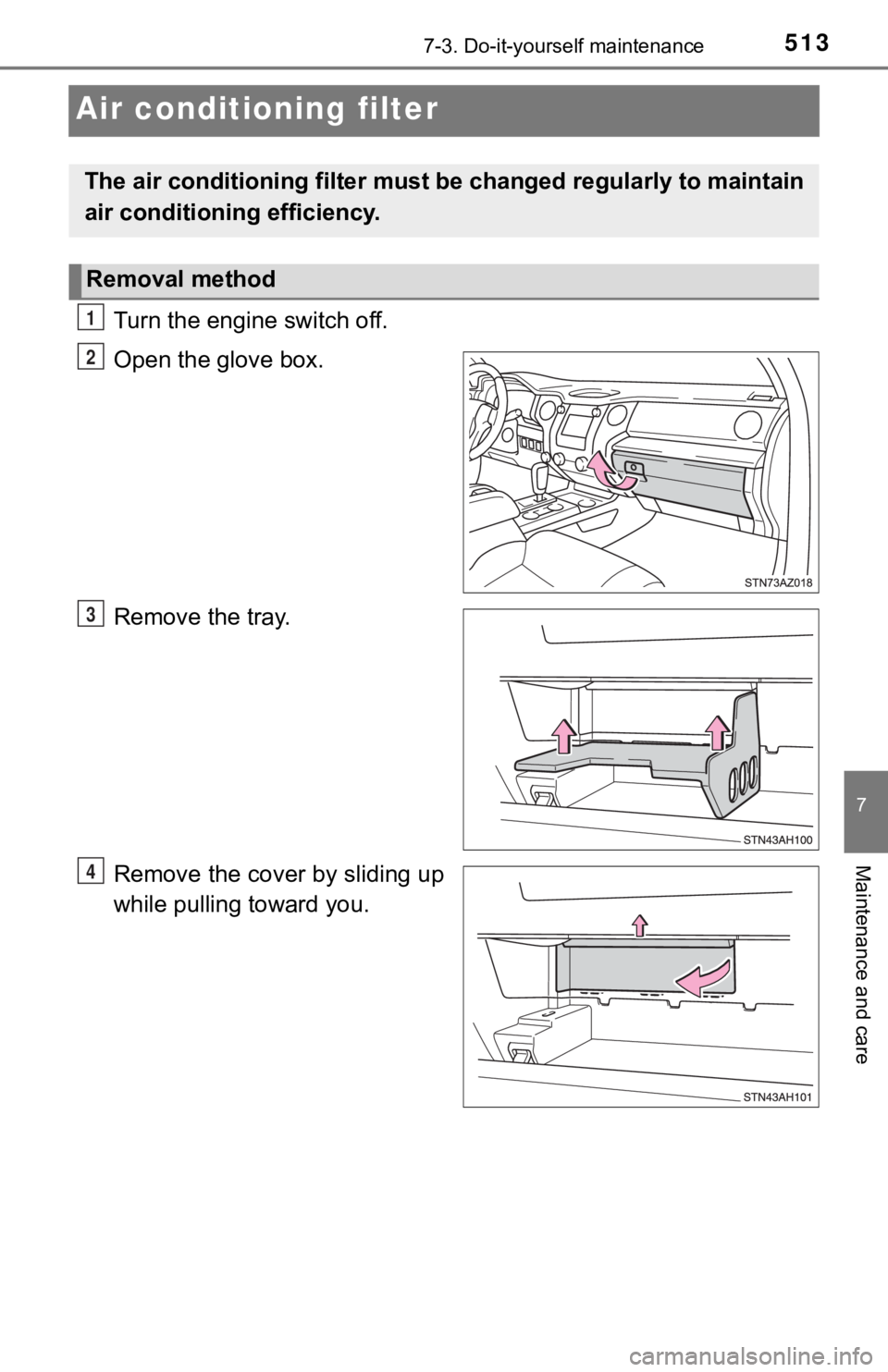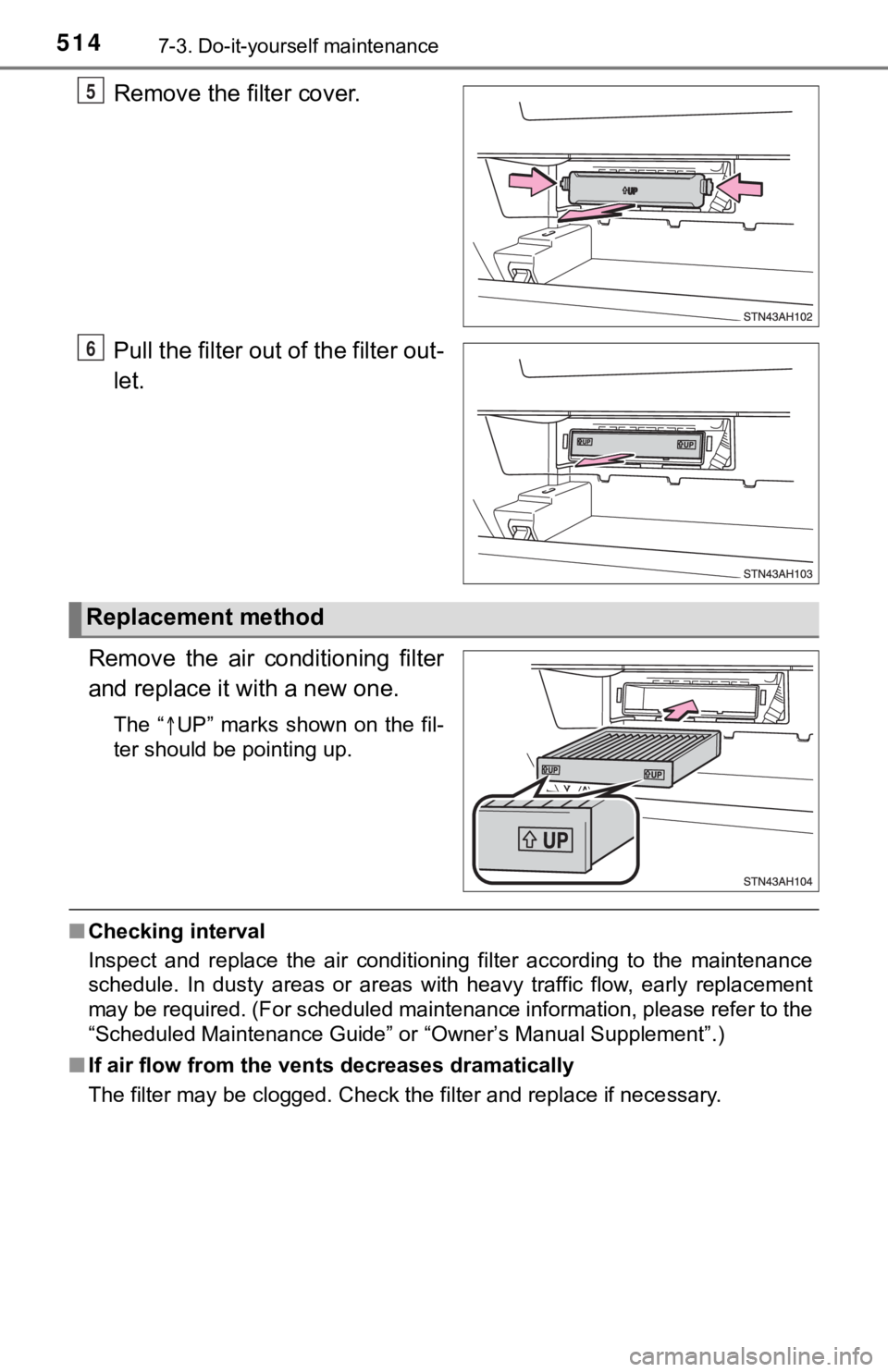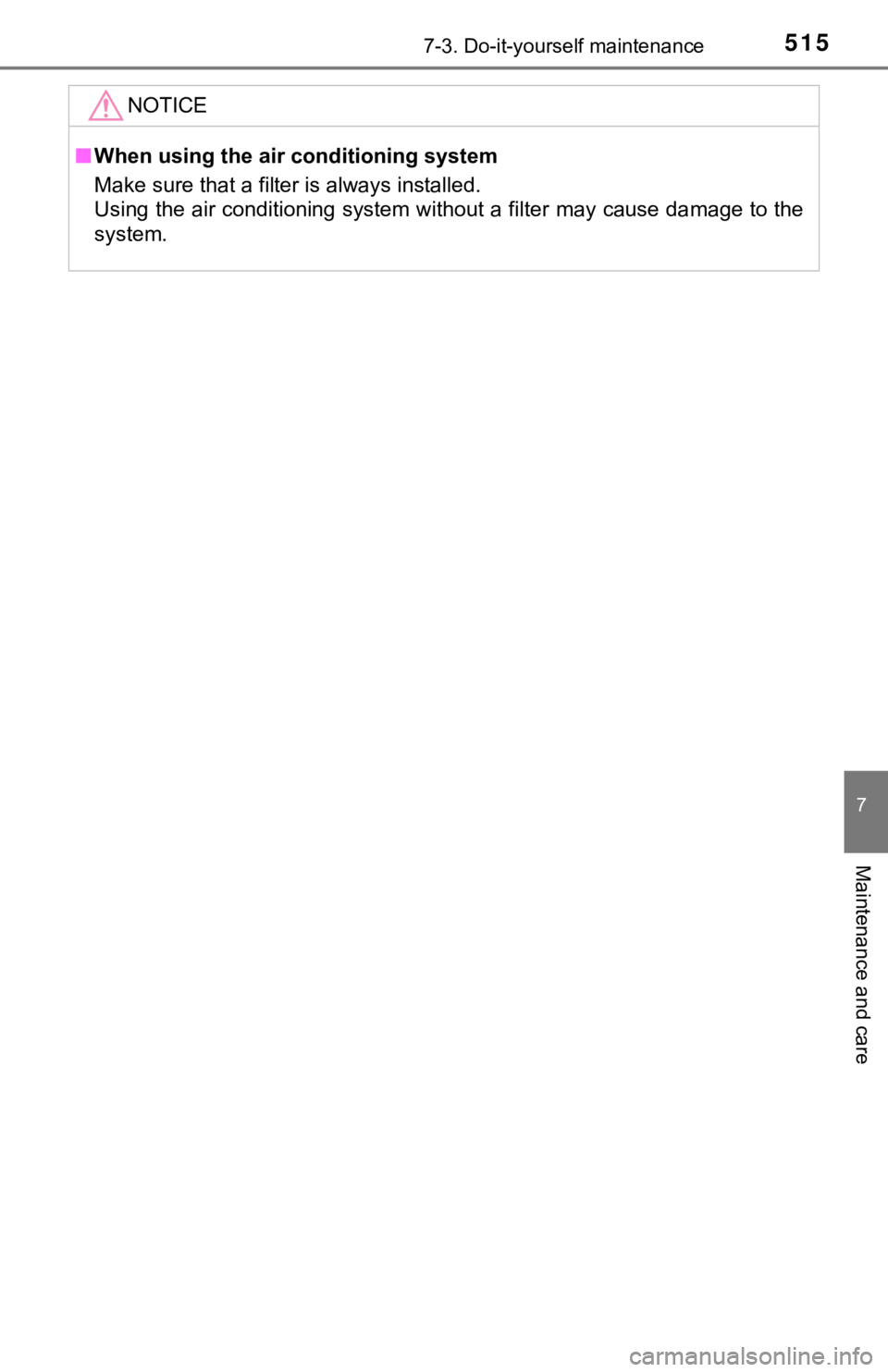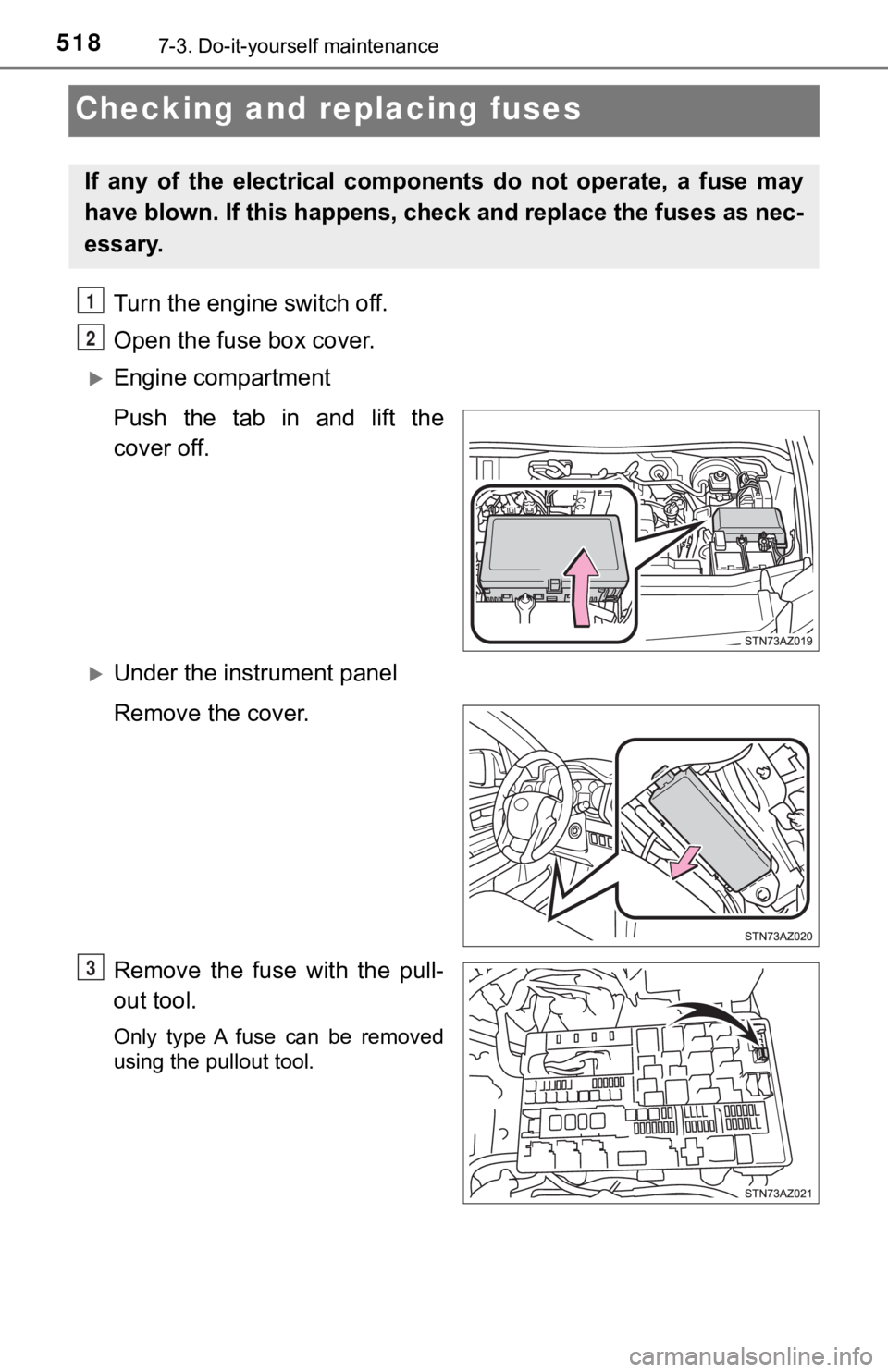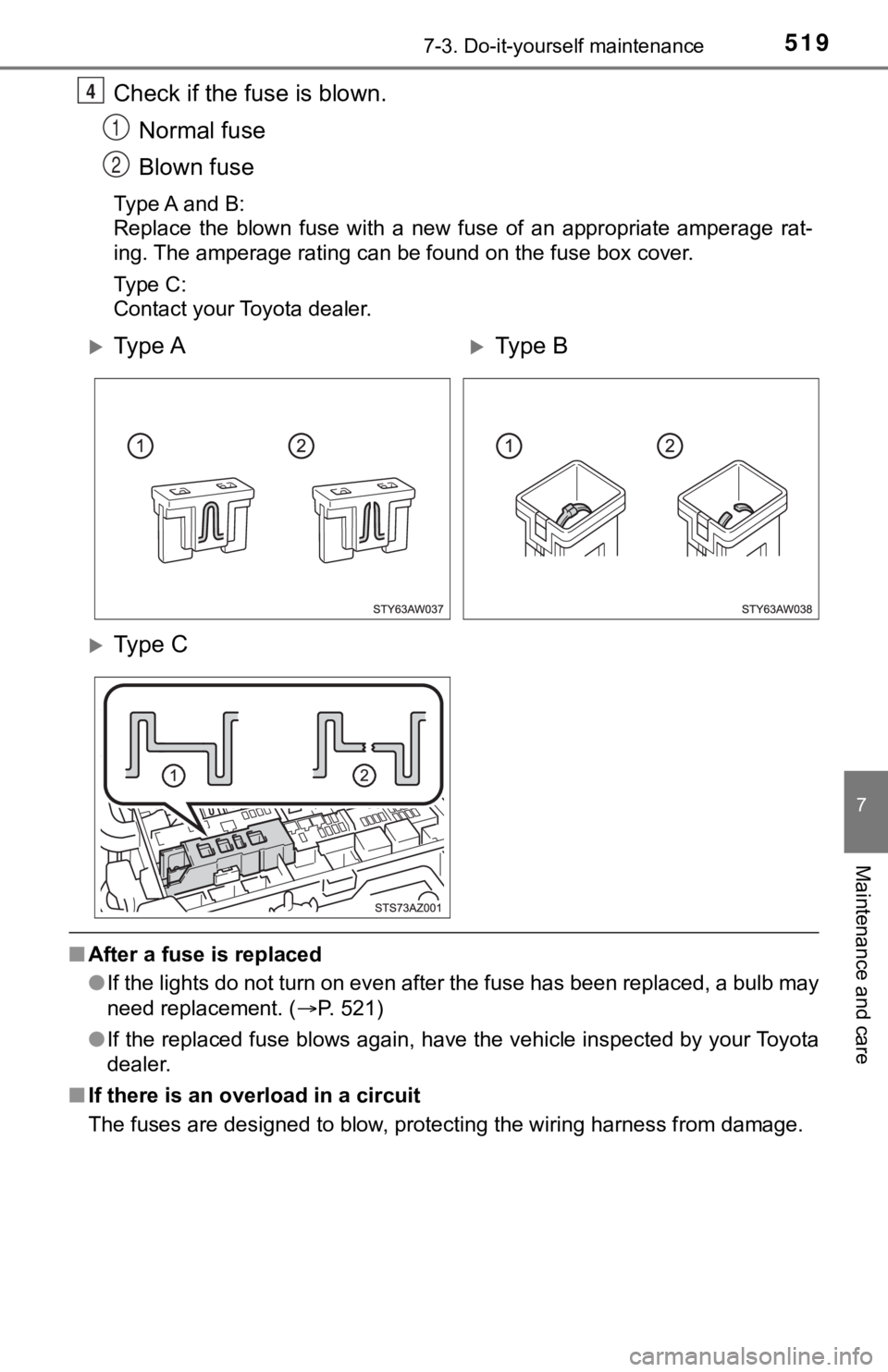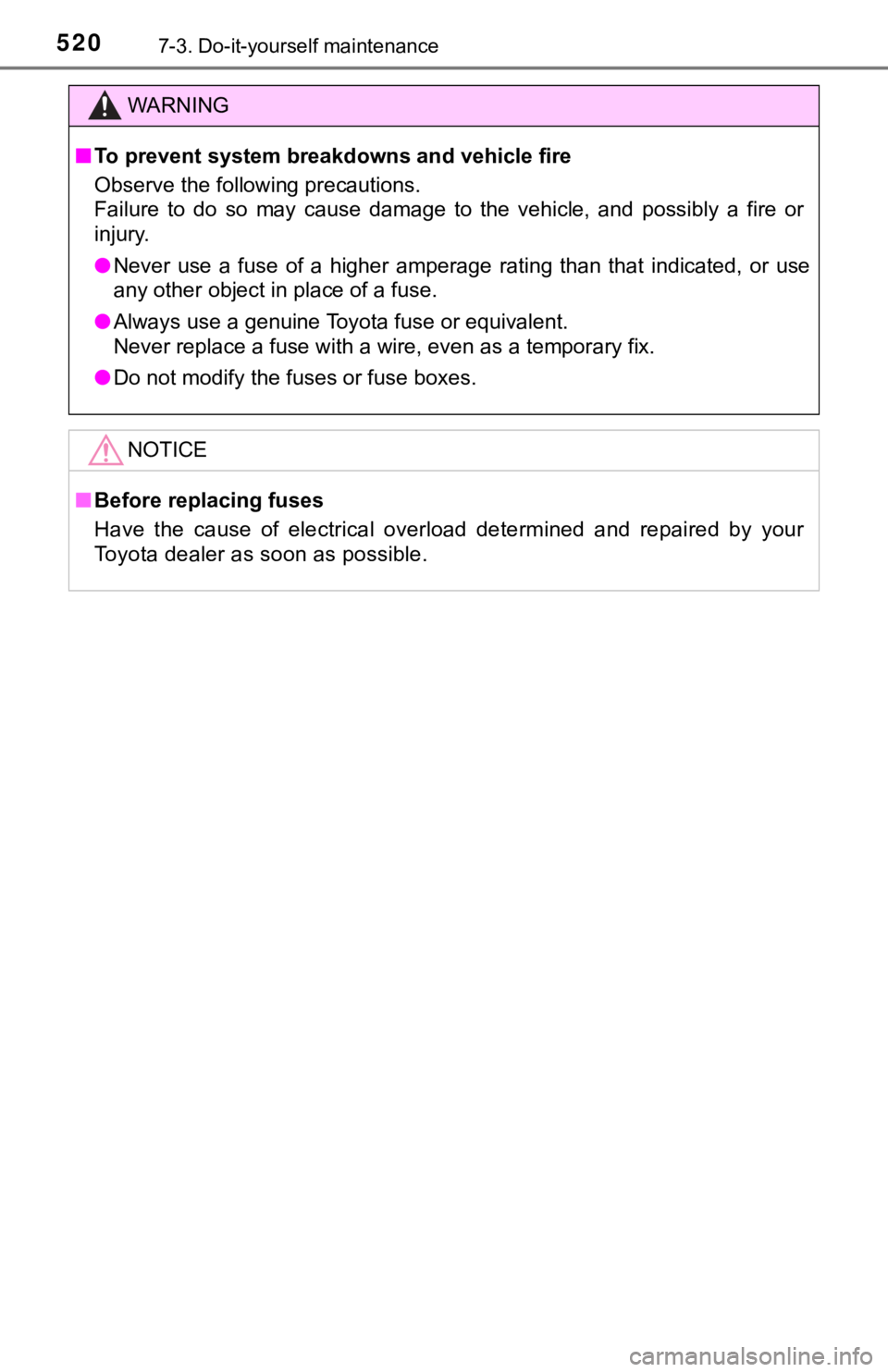TOYOTA TUNDRA 2018 Owners Manual (in English)
TUNDRA 2018
TOYOTA
TOYOTA
https://www.carmanualsonline.info/img/14/43029/w960_43029-0.png
TOYOTA TUNDRA 2018 Owners Manual (in English)
Trending: fuel consumption, parking sensors, USB port, oil type, air condition, display, brake sensor
Page 511 of 672
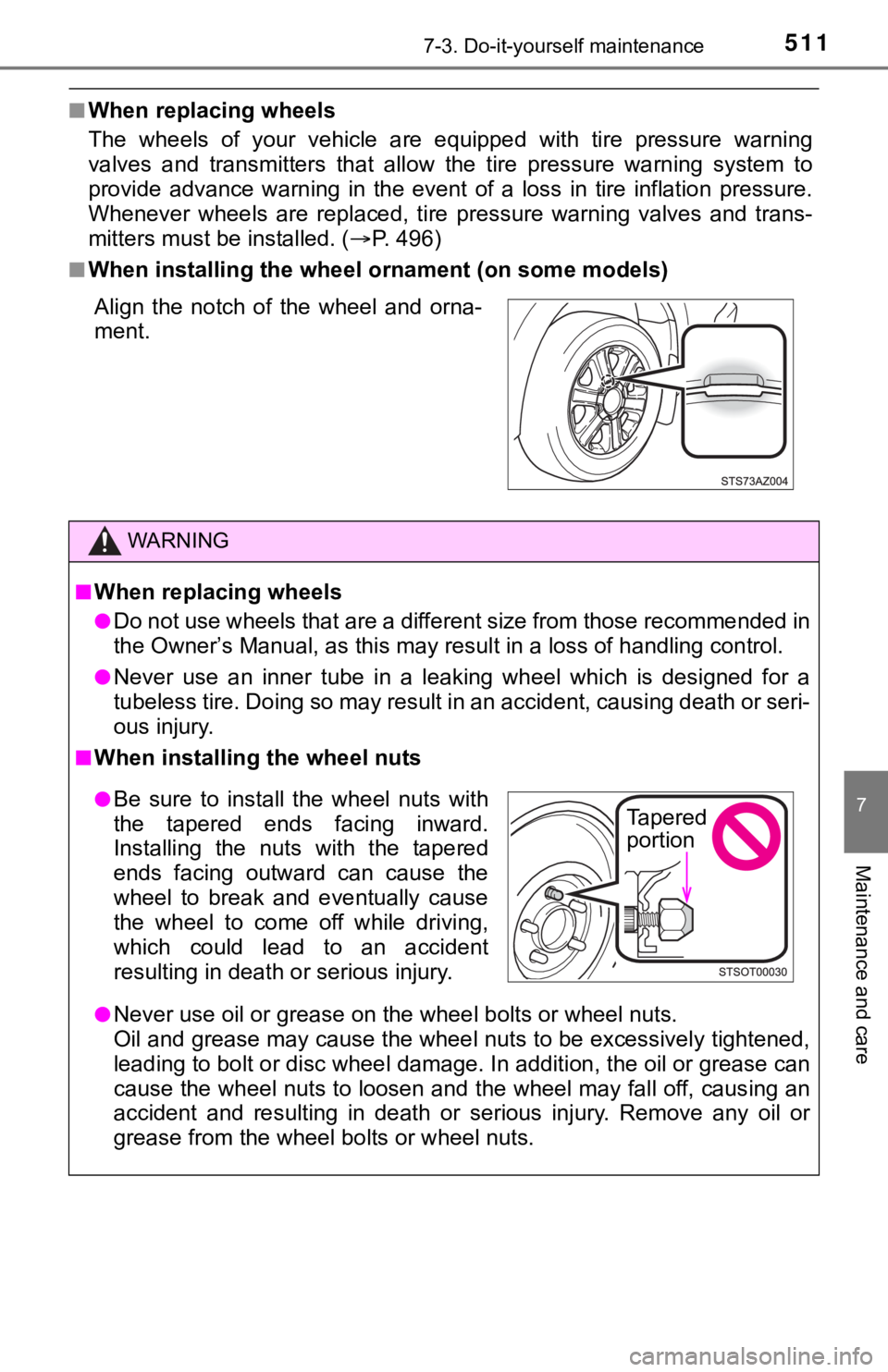
5117-3. Do-it-yourself maintenance
7
Maintenance and care
■When replacing wheels
The wheels of your vehicle are equipped with tire pressure warn ing
valves and transmitters that allow the tire pressure warning sy stem to
provide advance warning in the event of a loss in tire inflatio n pressure.
Whenever wheels are replaced, tir e pressure warning valves and trans-
mitters must be installed. ( P. 496)
■When installing the wheel o rnament (on some models)
WARNING
■When replacing wheels
●Do not use wheels that are a different size from those recommen ded in
the Owner’s Manual, as this may result in a loss of handling control.
●Never use an inner tube in a leaking wheel which is designed fo r a
tubeless tire. Doing so may resu lt in an accident, causing death or seri-
ous injury.
■When installing the wheel nuts
●Never use oil or grease on the wheel bolts or wheel nuts.
Oil and grease may cause the wheel nuts to be excessively tight ened,
leading to bolt or disc wheel damage. In addition, the oil or g rease can
cause the wheel nuts to loosen and the wheel may fall off, caus ing an
accident and resulting in death or serious injury. Remove any oil or
grease from the wheel bolts or wheel nuts.
Align the notch of the wheel and orna-
ment.
●Be sure to install the wheel nuts with
the tapered ends facing inward.
Installing the nuts with the tapered
ends facing outward can cause the
wheel to break and eventually cause
the wheel to come off while driving,
which could lead to an accident
resulting in death or serious injury.Tapered
portion
Page 512 of 672
5127-3. Do-it-yourself maintenance
NOTICE
■Replacing tire pressure warning valves and transmitters
●Because tire repair or replacement may affect the tire pressure warn-
ing valves and transmitters, make sure to have tires serviced b y your
Toyota dealer or other qualified service shop. In addition, make sure to
purchase your tire pressure warning valves and transmitters at your
Toyota dealer.
●Ensure that only genuine Toyota wheels are used on your vehicle.
Tire pressure warning valves and transmitters may not work prop erly
with non-genuine wheels.
Page 513 of 672
5137-3. Do-it-yourself maintenance
7
Maintenance and care
Air conditioning filter
Turn the engine switch off.
Open the glove box.
Remove the tray.
Remove the cover by sliding up
while pulling toward you.
The air conditioning filter must be changed regularly to maintain
air conditioning efficiency.
Removal method
1
2
3
4
Page 514 of 672
5147-3. Do-it-yourself maintenance
Remove the filter cover.
Pull the filter out of the filter out-
let.
Remove the air conditioning filter
and replace it with a new one.
The “UP” marks shown on the fil-
ter should be pointing up.
■ Checking interval
Inspect and replace the air conditioning filter according to th e maintenance
schedule. In dusty areas or areas with heavy traffic flow, earl y replacement
may be required. (For scheduled maintenance information, please refer to the
“Scheduled Maintenance Guide” or “Owner’s Manual Supplement”.)
■ If air flow from the ven ts decreases dramatically
The filter may be clogged. Check the filter and replace if nece ssary.
5
6
Replacement method
Page 515 of 672
5157-3. Do-it-yourself maintenance
7
Maintenance and care
NOTICE
■When using the air conditioning system
Make sure that a filter is always installed.
Using the air conditioning system without a filter may cause da mage to the
system.
Page 516 of 672
5167-3. Do-it-yourself maintenance
Wireless remote control batter y
●Flathead screwdriver
● Small flathead screwdriver
● Lithium battery CR2016
Remove the cover.
To prevent damage to the key,
cover the tip of the screwdriver with
a rag.
To prevent the buttons from being
disassembled, face the button sur-
face downward.
Remove the module.
Open the case cover using a
coin protected with tape, etc.,
and remove the depleted bat-
tery.
Insert a new battery with the “+”
terminal facing up.
: If equipped
Replace the battery with a n ew one if it is depleted.
You will need the following items:
Replacing the battery
1
2
3
Page 517 of 672
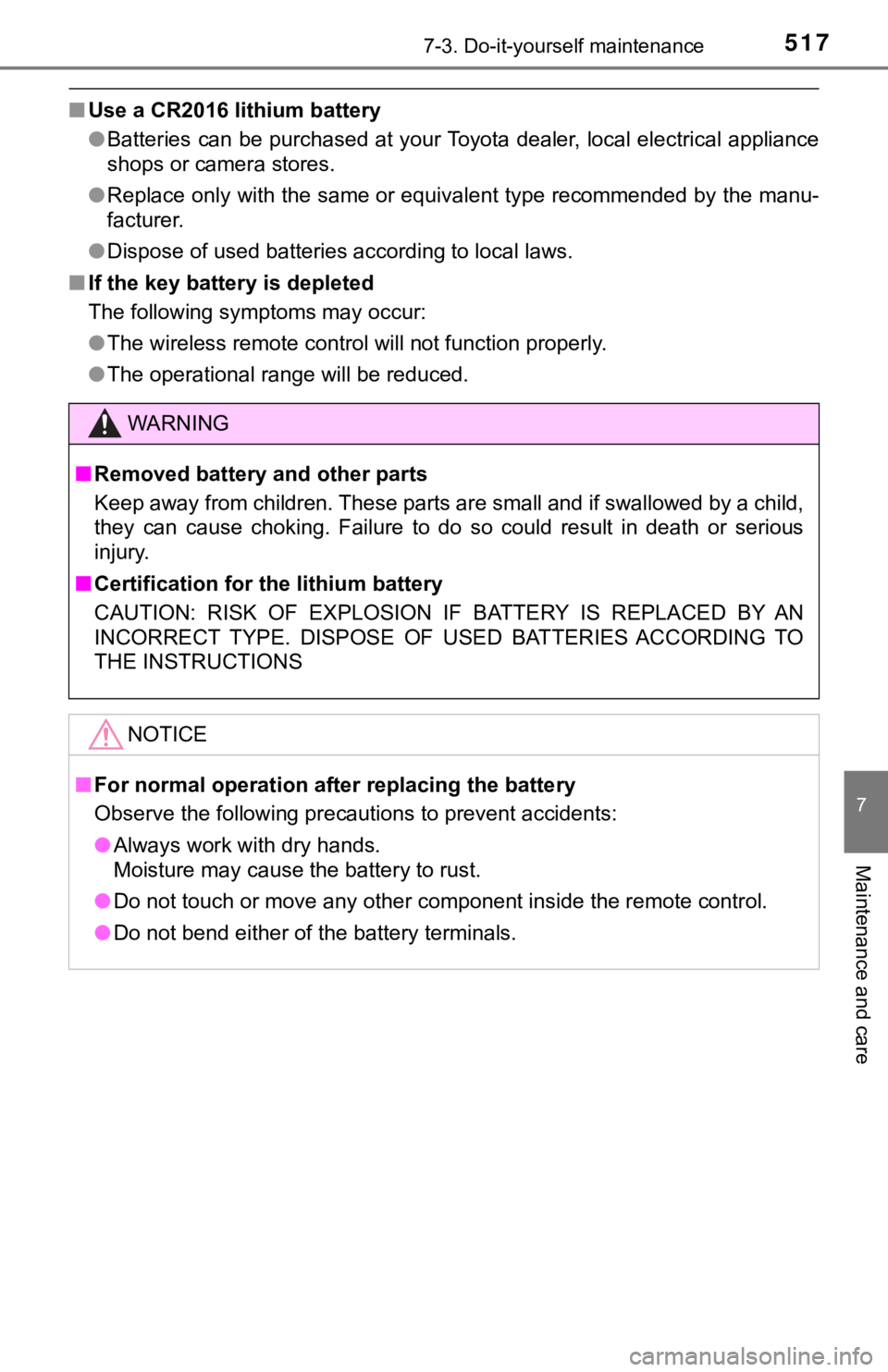
5177-3. Do-it-yourself maintenance
7
Maintenance and care
■Use a CR2016 lithium battery
●Batteries can be purchased at your Toyota dealer, local electri cal appliance
shops or camera stores.
● Replace only with the same or equivalent type recommended by the manu-
facturer.
● Dispose of used batteries according to local laws.
■ If the key battery is depleted
The following symptoms may occur:
●The wireless remote control will not function properly.
● The operational range will be reduced.
WARNING
■Removed battery a nd other parts
Keep away from children. These parts are small and if swallowed by a child,
they can cause choking. Failure to do so could result in death or serious
injury.
■ Certification for the lithium battery
CAUTION: RISK OF EXPLOSION IF BATTERY IS REPLACED BY AN
INCORRECT TYPE. DISPOSE OF USED BATTERIES ACCORDING TO
THE INSTRUCTIONS
NOTICE
■For normal operation after replacing the battery
Observe the following precautions to prevent accidents:
● Always work with dry hands.
Moisture may cause the battery to rust.
● Do not touch or move any other component inside the remote cont rol.
● Do not bend either of the battery terminals.
Page 518 of 672
5187-3. Do-it-yourself maintenance
Checking and replacing fuses
Turn the engine switch off.
Open the fuse box cover.
Engine compartment
Push the tab in and lift the
cover off.
Under the instrument panel
Remove the cover.
Remove the fuse with the pull-
out tool.
Only type A fuse can be removed
using the pullout tool.
If any of the electrical components do not operate, a fuse may
have blown. If this happens, check and replace the fuses as nec-
essary.
1
2
3
Page 519 of 672
5197-3. Do-it-yourself maintenance
7
Maintenance and care
Check if the fuse is blown.Normal fuse
Blown fuse
Type A and B:
Replace the blown fuse with a new fuse of an appropriate ampera ge rat-
ing. The amperage rating can be found on the fuse box cover.
Type C:
Contact your Toyota dealer.
■ After a fuse is replaced
●If the lights do not turn on even after the fuse has been repla ced, a bulb may
need replacement. ( P. 521)
● If the replaced fuse blows again, have the vehicle inspected by your Toyota
dealer.
■ If there is an overload in a circuit
The fuses are designed to blow, protecting the wiring harness f rom damage.
4
1
2
Ty p e AType B
Ty p e C
Page 520 of 672
5207-3. Do-it-yourself maintenance
WARNING
■To prevent system breakdowns and vehicle fire
Observe the following precautions.
Failure to do so may cause damage to the vehicle, and possibly a fire or
injury.
● Never use a fuse of a higher amperage rating than that indicate d, or use
any other object in place of a fuse.
● Always use a genuine Toyota fuse or equivalent.
Never replace a fuse with a wire, even as a temporary fix.
● Do not modify the fuses or fuse boxes.
NOTICE
■Before replacing fuses
Have the cause of electrical overload determined and repaired b y your
Toyota dealer as soon as possible.
Trending: steering wheel adjustment, jump cable, ESP, brake, height adjustment, open gas tank, jack


